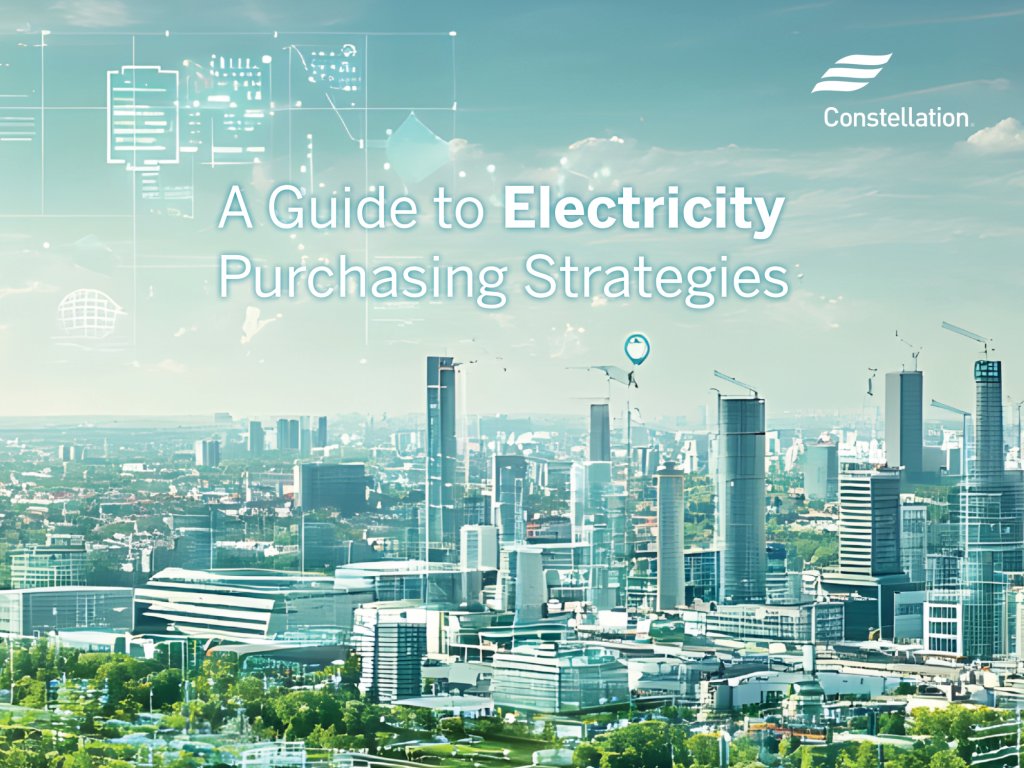Facility Manager’s Guide to the Best Energy Investments
Given the range of proven, energy-efficient technologies available, it might seem that any upgrade is a good one. After all, replacing T12 lamps and magnetic ballasts with T8s and electronic ballasts will certainly reduce energy use; so will replacing a 20-year-old chiller with a newer, more efficient one.
But getting the most out of an energy upgrade requires careful planning. An unplanned program can turn out to be nothing more than a series of one-off energy conservation projects that fail to take full advantage of the energy-saving opportunities that exist. Projects are implemented at the expense of others that could have been more effective, less costly or less disruptive. In some cases, measures can be counterproductive, reducing energy use by some systems but resulting in increases in overall energy use, cost or both.
What many facility executives fail to realize is that energy upgrades must be carefully matched to the needs of the facility. Just because a particular upgrade was successful in one facility does not mean that it will be successful in another.
Planning energy upgrades is a three-step process. Potential upgrade opportunities must be identified. Priorities must be set. An implementation plan must be developed and carried through. Cutting corners may save time and appear to save money up front, but this will only reduce the effectiveness of the overall program.
The planning process can be completed using in-house personnel, or it can be partially or fully contracted out. Which option is best for a particular facility depends on the level of in-house expertise and the availability of time that can be dedicated to the program. If in-house expertise is not available or if personnel are stretched too thin with other projects, then it is best to use outside help. Even when in-house staff is available and able to work on the project, there are times when outside expertise may be needed, particularly when specialized systems are involved.
Identifying Potential Upgrades
Before upgrades can be identified, a facility executive must develop an understanding of energy use in the facility. Developing this understanding requires gathering data from at least the past two years. Energy use and cost; monthly demand levels; daily, weekly, and seasonal load profiles for the facility — all will have to be tabulated so that an understanding of how, when and where the facility uses energy can be developed. Data should be analyzed for a two- or a three-year period to help minimize the impact of unusual circumstances, such as unseasonal weather or special occupancy patterns.
Look at the data for patterns. Is the load profile flat, curved or sharply peaked? If it is peaked, is there more than one peak? Do the peaks occur at roughly the same time every day? Most office, commercial and institutional facilities will have curved load profiles that closely parallel the occupancy of the facility and the summer outdoor temperature. Sharp peaks are the result of systems or individual components coming online and should be investigated further to see if the operation of that equipment is needed or if its use could be rescheduled to some off-peak period.
Compare these energy use figures to those in other comparable facilities. This benchmarking process will indicate a facility’s relative energy efficiency. By comparing the energy use to that of a highly efficient, similar facility, it is possible to get a first estimate of the potential that exists for improving the facility’s energy efficiency.
Once the energy use patterns are understood, complete an energy audit of the entire facility — a step-by-step examination of all energy-using systems and components in a facility. The audit identifies areas where energy efficiency can be improved by changing operating procedures or by upgrading existing systems and components. For each area that can be improved, the audit should quantify the energy used by that system or component and the potential savings that could result from an upgrade.
The energy audit together with the facility’s energy use information will identify the most significant opportunities for energy savings in the facility. When they are completed, the facility executive will have a thorough understanding of the energy use in the facility and what can be done to manage it.
Setting Priorities
If the energy audit has been thorough, a number of potential energy upgrade projects will have been identified along with their potential energy savings impact. Now what needs to be done is to organize the most suitable projects into an implementation plan. Depending on the needs of the facility, energy upgrade projects can be organized by payback, load reduction and need.
By far the most common method to set implementation priorities for energy upgrade projects is payback. Different methods can be used to determine different types of payback for a project, including simple payback, return-on-investment, and life-cycle costs. Each method looks at the cost to implement a project and the cost benefit that the project will produce for the facility. By ranking projects according to payback, executives can implement those that bring the most savings for the investment.
Although payback is the most widely used method for setting priorities for energy upgrade projects, it is not the best one for all facilities. Some facilities are faced with the need to reduce loads or flatten load profiles in order to obtain more favorable rates or to reduce loads on internal utility systems. For these facilities, payback is less of a concern than finding large loads that can be reduced or eliminated. For example, in negotiating with electrical suppliers under deregulation, a flat load profile will usually result in a lower rate for electricity. If a facility has a load profile that spikes or is steeply curved, it will generally help in obtaining lower rates if the facility could find ways to flatten the load profile. Similarly, if a facility has high electrical demand charges, finding projects that will reduce the electrical load during peak-demand periods will be a priority.
Sometimes, facility executives may be faced with the need to reduce loads. The need can arise internally, from overloaded electrical transformers and circuits, or from insufficient steam line capacity during peak heating periods. The need can also be external, imposed by utility companies faced with high demand for electricity or natural gas. It can be short or long term. For example, facilities typically need long-term solutions to overloaded circuit or insufficient capacity problems. While they could increase the size of the service, the cost of that increase is prohibitive, particularly when there are energy upgrade measures that can be implemented that would eliminate the need for new service.
The short-term need to reduce loads generally is the result of high demand for electricity or natural gas in a particular region of the country. At best, the high demand can force up prices. If the demand is high enough, it can result in brownouts or blackouts. To prevent this, utility companies will call large customers during periods of high demand and request that they take steps to cut their load by a fixed amount, typically 5 or 10 percent. In some cases, this load reduction is voluntary. In other cases, it carries a penalty for failure to comply, typically a surcharge for all use above a certain level during the period of high demand.
Load reduction programs start by identifying the largest loads in the facility that will be in operation during the time when peak demand is a concern. The energy-using systems that cause those loads can be upgraded with more efficient systems, or they can be replaced with alternative fuel systems. For example, the single largest electrical load in most office and commercial facilities is the building’s chiller. If the existing chiller is more than 15 years old, a new high efficiency replacement chiller can be installed that will reduce the energy requirements for air conditioning by approximately 50 percent. If steam or natural gas is readily available at a good price, an alternative fuel chiller, such as an absorption- or a natural-gas-engine-driven centrifugal chiller, can be installed, completely eliminating that portion of the electrical load. Alternative fuel chillers are particularly well suited for replacement of one chiller in installations where multiple chillers are installed. During periods of peak demand and high electrical rates, the alternative fuel chiller is operated. When demand and rates fall, the conventional electric chillers are used.
In some cases, particularly those where facility executives must temporarily reduce loads for a short period of time, it may not be necessary to replace or upgrade existing equipment. Instead, facility executives will have to develop a plan for temporary load reduction. That plan will require the identification and quantification of loads that can be temporarily disconnected from the utility system in order to avoid the high cost penalties. Facility executives should develop the plan well in advance. When the local utility company calls mandating a load reduction, it is too late to try to identify what loads can be removed from the system.
The single biggest stumbling block to energy upgrades is lack of funding for implementation. Energy upgrades must compete with other programs for funding. While some organizations are willing to fund a wide range of upgrade projects, others are reluctant, even when upgrades show a positive return, because they believe there is too much risk involved. This risk comes from uncertainties in the economic analysis. Weather factors, energy pricing, energy availability — all introduce uncertainty into the economics of energy upgrades, uncertainty that may make organizations unwilling to pay for energy upgrades.
If funding is available, and the organization is willing to fund upgrades, the facility executive should move forward with implementation, following the priorities previously established. If funding isn’t available, or if the organization is not willing to assume the risk, alternative funding methods can be used, typically one that involves shared savings.
Energy service companies (ESCOs) offer facilities a means to implement energy upgrade projects without having to invest the capital up front or assume the risks of the project. In exchange, the ESCOs take a portion of the energy savings produced by the energy upgrade to recover their investment. Although there are a number of different programs, the most common form involves guaranteed savings to the facility. The ESCO purchases and installs the energy upgrade equipment, and recovers its costs through a shared savings arrangement with the owner. By avoiding up-front costs, facility executives can implement a wider range of energy upgrades quickly.
Analyzing Contracts
Contracts with ESCOs cannot be entered into lightly. The scope of the project must be clearly defined, as must the objectives. Potential ESCOs must be carefully screened. Equipment selection must be fully reviewed and approved by the facility executive. But the most critical element of the contract is determining how energy savings are measured. Energy savings are affected by a wide range of variables, including setpoints, weather and occupancy. Those factors must be taken into consideration in determining savings. Performance measures must be established to identify the load and what level of savings will be accomplished by each measure to be implemented under the program. Payback rates must be established. Some method of verifying savings that is acceptable to both parties in the contract must be developed in advance.
ESCO contracts can become very confusing if conditions change in the facility, or if additional energy conservation measures are implemented and those measures are not part of the contract. Separating the savings for contract items from non-contract items is difficult at best.
Despite the limitations, ESCO contracts are becoming increasingly popular as facility executives seek ways to quickly implement a wide range of energy retrofits. To be successful, it is best to bring the ESCO on as early as possible in the planning process. It can help to identify the most effective way to achieve program goals.
Energy upgrades, as long as they are implemented as part of a comprehensive energy program, can be the road to energy efficiency and reduced energy costs.
—————–
James Piper, PE, PhD, is a consultant and writer with more than 25 years experience in the facilities field. He is a contributing editor to Building Operating Management, a GreenBiz News Affiliate. Copyright 2001 Building Operating Management.









